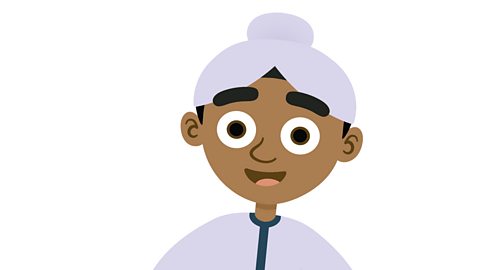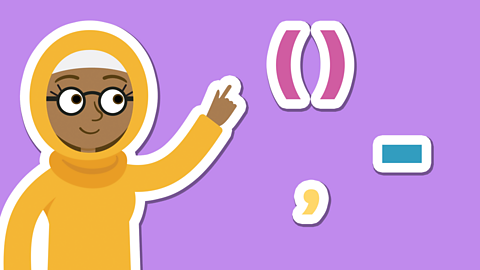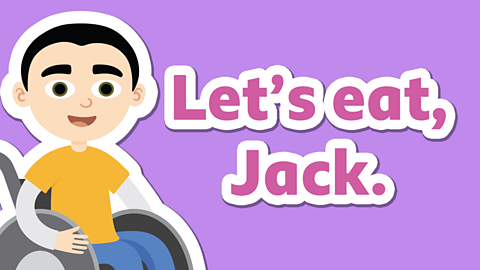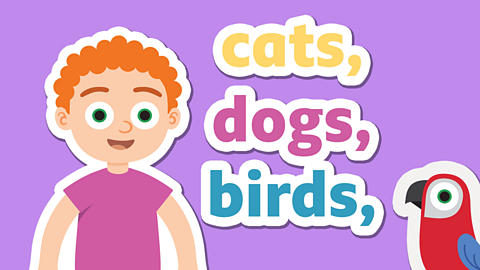Watch: How do we use brackets?
As brackets help us to show extra information in a sentence, they are a type of parenthesis.
Watch this short clip to see an example of how to do this.
Find out how to use brackets.
Adding extra details using brackets

Extra detail can be added to a sentence using brackets. The extra detail should not change the meaning of the sentence. It should just make the sentence more interesting or informative.
For example:
Albert the alien was in charge of the wrecking ball.
Albert the alien (who had no training) was in charge of the wrecking ball.
If we took away the words in brackets the sentence would still make sense, but it's more interesting with the added detail.

The added detail in the brackets should go straight after whatever it is adding information about.
For example:
The footballer (who looked rather tired) shot the ball at the massive net.
The extra information is about the footballer.
The footballer shot the ball (which was covered in mud) at the massive net.
The extra information is about the ball.
Activity 1
Check how well you understood the video by highlighting all the words that should be in brackets.
Remember: Brackets contain extra information. The sentence should still make sense if you took the extra information away.
Activity 2
This video tells the Viking story of how the world was created by a great god called Odin.
It’s narrated by the Viking god of fire, Loki.
Listen to the Viking story of how Odin created the world.
After watching the video, copy out the sentences below and complete them using an option from the phrase bank.
The phrases provide extra information, so they should go inside the brackets.
Read the sentences carefully. They should still make sense with the extra information added.
Phrase bank
- _ ±«Óătv of the Humans_
- _ who was puzzled_
- _ with a great roar_
- _ the god of fire_
- _ filled with trees, lakes, flowers and rivers_
- _ who lived a long time ago_
The Vikings (…) sailed around in very long ships.
Loki (…) watched Odin create the world.
Loki (…) said, “Isn’t it a bit generous, giving a home to our enemy the giants?”
Odin (…) sent a freezing wind across the blackness.
Odin breathed gently and a new world (…) appeared.
This land was called Midgard (…).
Activity 3

Finish these three sentences by putting your own extra information inside the brackets.
For example:
The Giants (who were the gods’ enemies) lived in a land made from freezing cold ice and frost.
Read the whole sentence first.
Remember that brackets add information about whatever is directly before them in the sentence.
The palaces (…) had turrets of gold and silver.
This land was called Asgard (…).
Odin (…) created the world.
Have a go at writing two of your own sentences about the video, using brackets to add extra information. Look at the previous examples to help you.

Play our fun English game Crystal Explorers. gamePlay our fun English game Crystal Explorers
Use grammar, punctuation and spelling skills to explore jungles, caves and tombs on your mission!

More on Punctuation
Find out more by working through a topic
- count12 of 12

- count1 of 12

- count2 of 12

- count3 of 12
